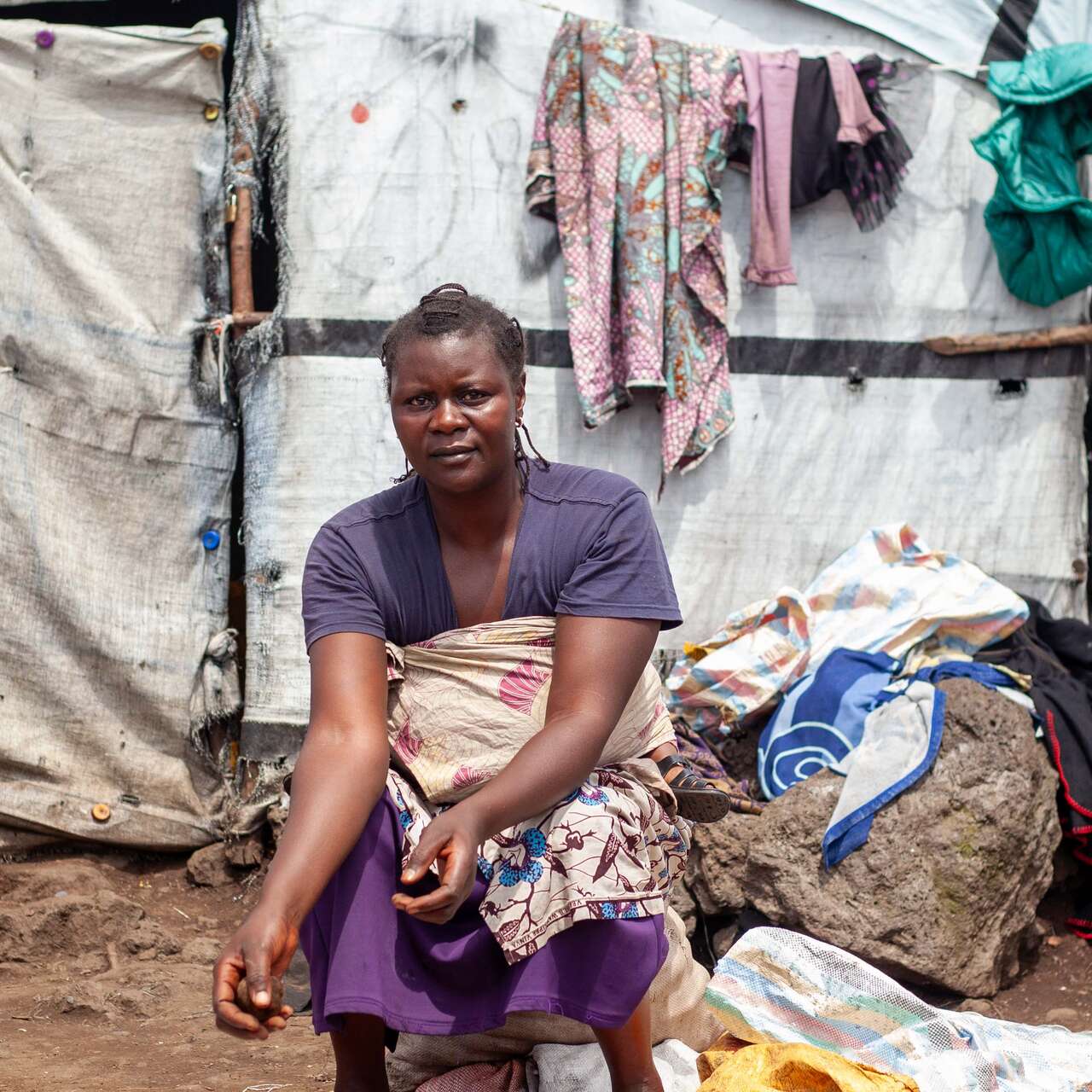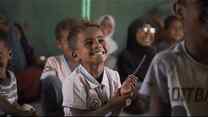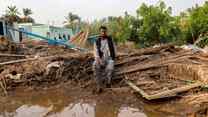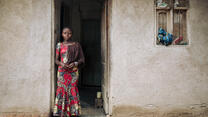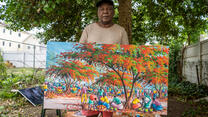Regional tensions drive resurgent conflict in eastern Congo
- The Democratic Republic of Congo remains on the IRC’s Watchlist Top 10 as decades-long conflicts escalate.
- After nearly 10 years of dormancy, the M23 armed group launched a new offensive in 2022, forcing families to flee their homes and disrupting humanitarian aid.
- Major disease outbreaks - including measles, malaria and Ebola - threaten an already weak healthcare system.
Country facts
- Population: 89.6 million
- People in need: 19.6 million
- People internally displaced by crisis: 5.5 million
- Rank in Human Development Index: 179 of 191
IRC response
- Started work in Congo: 1996
- People assisted (2019): 2,764,357
- Target: 2.3 million
The Democratic Republic of Congo, located in Central Africa, has spent decades in the grip of violent conflict and economic unrest. Security has severely deteriorated since 2017, displacing over 5 million people and leaving 19.6 million in need of humanitarian assistance.
Congo was also confronted with several Ebola outbreaks in recent years, COVID-19 and an increasingly severe hunger crisis. The IRC helps vulnerable Congolese meet urgent needs and provides support to rebuild communities.
Following years of economic and political decline and two regional wars, people in Congo continue to face extreme violence, massive displacement, and widespread rape. The conflicts caused an estimated 5.4 million deaths, mostly as a result of disease and malnutrition.
In 2016, the country became caught in an electoral and political crisis that sparked civil unrest and emboldened armed groups in some areas. In these conflict zones, women and girls face widespread violence, and people - including children - are extorted, kidnapped, and forced by their captors to fight or work.
Despite peace agreements, slight economic progress, and improvements to education and health services, over 20% of the population continues to struggle with recurrent crises. The impacts of conflict, economic collapse, Ebola outbreaks and the COVID-19 pandemic could lead to famine.
Congo remains one of the world’s least developed countries in terms of life expectancy, education, and standard of living. Nearly 64% of the population lives in poverty. Almost 70% of the population is engaged in subsistence farming, and farmers routinely lack the resources they need - such as tools and seeds - to make a living from their work. Many people don’t have enough food, with 21.8 million facing crisis or worse levels of food insecurity - the highest number that has ever been recorded in any country.
The health system is poorly staffed, organised, funded, and supplied. Few people are vaccinated against preventable diseases. Several epidemics are present in the country, including cholera and measles, and there is a new outbreak of Ebola in North Kivu province. The country’s most severe outbreak of Ebola led to the death of more than 2,000 people and took a toll on the already fragile health system. Mothers die in childbirth in 13 out of every 1,000 deliveries, and many children die before their first birthday.
Sexual violence against women and girls is also a significant problem in Congo. Early marriage and pregnancy cause girls to drop out of school, making it harder for them to earn a living later in life. Over half of women over 15 report they have ever experienced physical and/or sexual violence from an intimate partner. Many girls and boys do not attend school to begin with, despite the declaration of free education in 2019. Any instruction children do receive is often of poor quality.
Congo has the largest displaced population in Africa with more than 5.5 million internally displaced persons, including 3.22 million children in 2020. Efforts to solve this chronic displacement crisis are hindered by poor governance and infrastructure, and ongoing insecurity in conflict-affected areas.
The IRC’s mission is to help people whose lives and livelihoods are shattered by conflict and disaster to survive, recover and gain control of their future.
We first began working in Congo in 1996, providing emergency assistance and humanitarian aid to those affected by violence and uprooted from their homes. We also worked with local communities to help them rebuild and to create education and health care programs.
As the country struggles to recover from decades of conflict and widespread disease, the IRC is focusing our efforts in Tanganyika, Kasai Central, and North and South Kivu by:
- providing emergency healthcare, shelter, water, sanitation, and emergency supplies to hundreds of thousands of people in eastern and central Congo;
- empowering communities to work together on peace-building projects aimed at conflict reduction and economic recovery;
- training health and government workers, rehabilitating hospitals and clinics, and providing essential medicine;
- providing counselling, medical care and legal assistance to survivors of sexual assault;
- offering a range of reproductive health services to women and adolescent girls to enable safer childbirth and improved spacing between children;
- ensuring girls are enrolled and succeeding in school, as well supporting them with informal education, so they can take control of their futures;
The IRC’s work in Congo is more critical than ever as millions struggle to recover from ongoing conflict and meet basic needs. We pledge to put the needs of those most affected by crisis, specifically women and girls, at the forefront of our efforts and to achieve measurable improvements in health, safety, education, and economic wellbeing.
We will continue to support Congolese who have been forced from their homes by crisis, expanding our reach based on where the greatest need is and where we can create the biggest impact. We’ll also continue to help Congolese women and girls who have suffered from violence and struggled to rebuild their lives.
